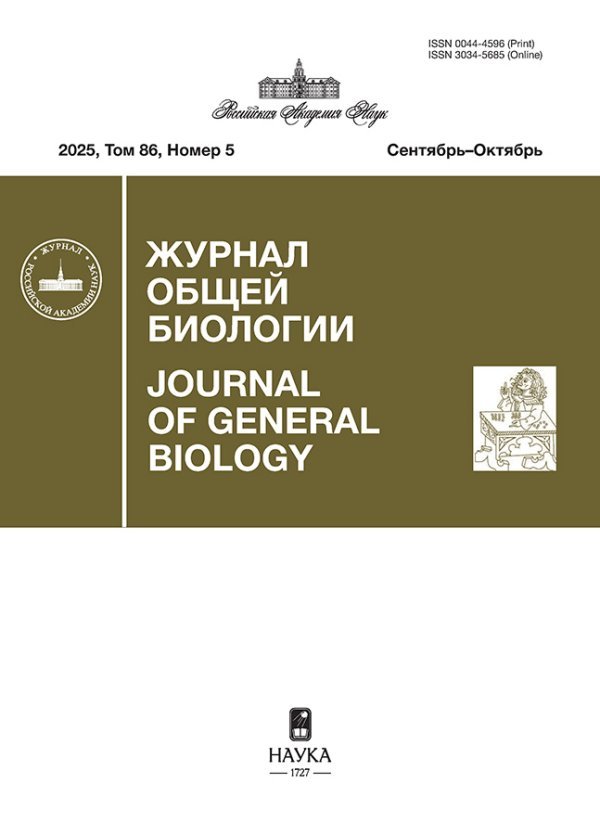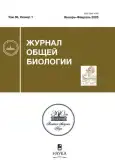Productivity of forest ecosystems in dependence on ecological conditions of growing
- Authors: Tarasov S.I.1, Gerling N.1
-
Affiliations:
- Institute of Biology, Komi Science Centre, Ural Branch, RAS
- Issue: Vol 86, No 1 (2025)
- Pages: 3-16
- Section: Articles
- URL: https://vestnik.nvsu.ru/0044-4596/article/view/682794
- DOI: https://doi.org/10.31857/S0044459625010017
- EDN: https://elibrary.ru/SOUZHJ
- ID: 682794
Cite item
Abstract
Proposed is a method for assessing the biological productivity of forest ecosystems, which allows to overcome the disadvantages inherent in the traditional methods, not taking into account the significant statistical heterogeneity of stands on a number of morphometric parameters that change in the process of forest ecosystem development. The concepts and tools of the theory of stationary random functions were used in the development of the method. The central idea of the proposed method is the concept of a hypothetical average tree characterizing the growth of a pure stand at the main stages of its development. The final result of this methodological approach is the stand bioproductivity index, which provides a quantitative assessment of bioproductivity and allows comparing the bioproductivity of pure stands growing in different climatogeographical conditions. The practical application of the method is considered on the example of stands of Siberian fir (Abies sibirica Ledeb.). The relative error of the bioproductivity index of fir stands is estimated. The method was validated on the basis of revealing correlations between the index of fir stand bioproductivity and ecological assessments of habitats obtained using phytoindicator properties of the ground cover.
Full Text
About the authors
S. I. Tarasov
Institute of Biology, Komi Science Centre, Ural Branch, RAS
Author for correspondence.
Email: tarasov@ib.komisc.ru
Russian Federation, Kommunisticheskaya st., 28, Syktyvkar, Komi Republic, 167982
N. V. Gerling
Institute of Biology, Komi Science Centre, Ural Branch, RAS
Email: gerling@ib.komisc.ru
Russian Federation, Kommunisticheskaya st., 28, Syktyvkar, Komi Republic, 167982
References
- Алексеев А.С., 1992. Балансовая модель продукционного процесса в лесной экосистеме // Экология. № 2. С. 35–40.
- Алексеев В.В., Крышев И.И., Сазыкина Т.Г., 1992. Физическое и математическое моделирование экосистем. СПб.: Гидометеоиздат. 368 с.
- Атлас почв Республики Коми, 2010. Сыктывкар: Ин-т биологии, Коми науч. центр УрО РАН. 356 с.
- Атлас Республики Коми по климату и гидрологии, 1997. М.: Дрофа. 116 с.
- Базилевич Н.И., Гребенщиков О.С., Тишков А.А., 1986. Географические закономерности структуры и функционирования экосистем. М.: Наука. 297 с.
- Базыкин А.Д., 2003. Нелинейная динамика взаимодействующих популяций. М.; Ижевск: Институт компьютерных исследований. 368 с.
- Бузыкин А.И., Гавриков В.Л., Секретенко О.П., Xлебопрос Р.Г., 1985. Анализ структуры древесных ценозов. Новосибирск: Наука. 94 с.
- Виноградов Б.В., 1964. Растительные индикаторы и их использование при изучении природных ресурсов. М.: Высш. шк. 328 с.
- Гавриков В.Л., 2013. Рост леса: уровни описания и моделирования. Красноярск: Сиб. федер. ун-т. 176 с.
- Должанский А.М., Бондаренко О.А., Петлёваный Е.А., 2017. Влияние вида средней взвешенной оценки на зависимость комплексного показателя качества от параметров объекта // Приборы и методы измерений. Т. 8. № 4. С. 398–407.
- Исаев А.С., Суховольский В.Г., Хлебопрос Р.Г., Бузыкин А.И., Овчинникова Т.М., 2005. Моделирование лесообразовательного процесса: феноменологический подход // Лесоведение. № 1. С. 3–11.
- Лотов А.В., Поспелова И.И., 2014. Конспект лекций по теории и методам многокритериальной оптимизации. М. http://www.ccas.ru/mmes/mmeda/Lotov&Posp.pdf
- Мамаев С.А., 1973. Формы внутривидовой изменчивости древесных растений (на примере семейства Pinaceae на Урале). М.: Наука. 283 с.
- Одум Ю., 1986. Экология. М.: Мир. Т. 1. 328 с.
- ОСТ 56-69-83, 1983. Пробные площади лесоустроительные. Метод закладки. М.: ЦБНТИ Гослесхоза СССР. 60 с.
- Полевая геоботаника, 1964. М.: Наука. Т. 3. 530 с.
- Суховольский В.Г., 2004. Экономика живого: Оптимизационный подход к описанию процессов в экологических сообществах и системах. Новосибирск: Наука. 140 с.
- Тарасов С.И., Герлинг Н.В., 2022. Оценка надземной биомассы Abies sibirica (Pinaceae) на Северо-Востоке европейской части России (Республика Коми) // Растительные ресурсы. Т. 58. № 4. С. 342–353.
- Толстова Ю.Н., 2000. Анализ социологических данных. Методология, дескриптивная статистика, изучение связей между номинальными признаками. М.: Научный мир. 352 с.
- Усольцев В.А., Залесов С.В., 2005. Методы определения биологической продуктивности насаждений. Екатеринбург: Урал. гос. лесотехн. ун-т. 147 с.
- Штойер Р., 1992. Многокритериальная оптимизация. Теория, вычисления и приложения. М.: Радио и связь. 504 с.
- Юдин Ю.П., 1954. Темнохвойные леса // Производительные силы Коми АССР. Т. 3. Ч. 1. Растительный мир. М.; Л.: Изд-во АН СССР. С. 42–126.
- Яглом А.М., 1981. Корреляционная теория стационарных случайных функций. Л.: Гидрометеоиздат. 280 с.
- Ecological Modeling in Risk Assessment: Chemical Effects on Populations, Ecosystems, and Landscapes, 2002 / Ed. Pastorok R.A., et al. Boca Raton: CRC Press LLC. 302 p.
- Kloeppel B.D., Harmon M.E., Fahey T.J., 2007. Estimating aboveground net primary productivity in forest-dominated ecosystems // Principles and Standards for Measuring Primary Production / Eds Fahey T.J., Knapp A.K. N.-Y.: Oxford Univ. Press. P. 63–81.
- Koya P.R., Goshu A.T., 2013. Generalized mathematical model for biological growths // Open J. Model. Simul. V. 1. P. 42–53.
- Morganstein D., Marker D., 1997. Continuous quality improvement in statistical agencies // Measurement and Process Quality. N.-Y.: Wiley. P. 475–500.
- Newbould P.J., 1970. Methods for Estimating the Primary Production of Forests. Oxford: Blackwell Scientific. 62 p.
- Weiskittel A.R., Hann D.W., Kershaw J.A., Vanclay J.K., 2011. Forest Growth and Yield Modeling. N.-Y.: John Wiley & Sons Ltd. 415 p.
Supplementary files












